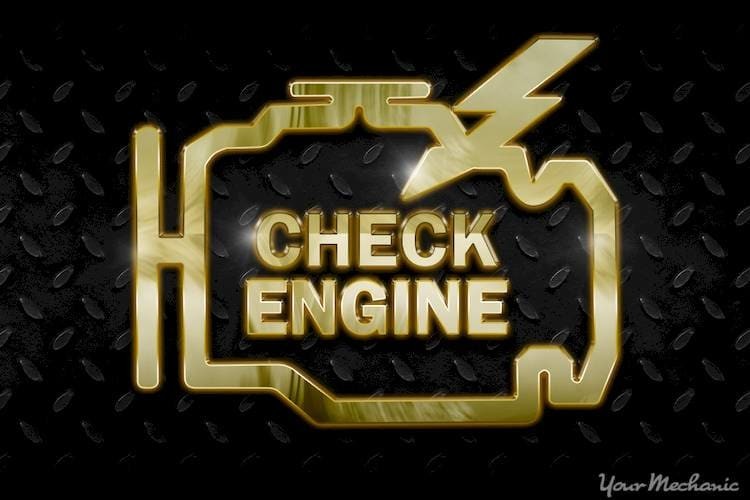The P2006 error code is a common issue that can plague car owners. This diagnostic trouble code (DTC) indicates a problem with the intake manifold runner control circuit, specifically on Bank 1. Understanding what this code means and how to address it can save you time, money, and potential engine damage. This comprehensive guide will delve into the intricacies of the P2006 code, covering its causes, symptoms, diagnostic procedures, and possible solutions.
 Diagnostic Check Engine Light
Diagnostic Check Engine Light
What Does the P2006 Code Mean?
The P2006 code signifies that the intake manifold runner control (IMRC) system on Bank 1 has detected a stuck closed intake runner flap. The engine control unit (ECU) constantly monitors and adjusts the position of these flaps to optimize airflow for different engine speeds and loads. When a flap is stuck closed, the ECU triggers the P2006 code and illuminates the Check Engine Light. This malfunction also forces the vehicle into a failsafe mode to prevent further damage, limiting engine performance until the issue is resolved. This code is often associated with other IMRC related codes such as P2005, P2007, P2008, P2009, P2010, and P2015, which indicate similar problems on different banks or circuits.
Causes of the P2006 Error Code
Several factors can contribute to a stuck closed intake runner flap and trigger the P2006 code:
- Faulty or Clogged Intake Manifold Runner: Carbon buildup or debris can restrict the movement of the intake runner flaps, preventing them from opening and closing correctly.
- Wiring Harness Issues: Damaged, shorted, or open wiring in the IMRC circuit can disrupt communication between the ECU and the control solenoid.
- Malfunctioning Intake Manifold Runner Control Solenoid: The solenoid responsible for actuating the flaps may fail due to electrical or mechanical problems.
- Poor Electrical Connections: Loose or corroded connections in the IMRC circuit can hinder the flow of electricity, leading to improper solenoid operation.
Recognizing the Symptoms of a P2006 Code
While the illuminated Check Engine Light is the most obvious symptom, other performance issues can accompany the P2006 code:
- Rough Engine Idle: The engine may run unevenly at idle due to the restricted airflow.
- Reduced Low-End Engine Power: A noticeable lack of power at lower RPMs can occur because of the inability to optimize air intake.
- Poor Engine Performance: The engine may hesitate, stumble, or generally run poorly due to the airflow imbalance.
Diagnosing the P2006 Code: A Mechanic’s Approach
Diagnosing the P2006 code requires a systematic approach utilizing specialized tools and procedures:
- Retrieving Diagnostic Trouble Codes: A scan tool is connected to the vehicle’s OBDII port to retrieve stored codes and freeze frame data, providing valuable insights into the conditions when the code was triggered.
- Visual Inspection: A thorough inspection of the wiring harness, vacuum lines, and related components is performed to identify any visible damage or abnormalities.
- Live Data Monitoring: Using the scan tool, the mechanic monitors the intake manifold runner position in real-time while operating the vehicle to assess its functionality.
- Solenoid Testing: A vacuum hand pump is used to test the operation of the intake manifold runner control solenoid, verifying its ability to create the necessary vacuum to actuate the flaps.
Common Diagnostic Mistakes to Avoid
Misdiagnosis can lead to unnecessary repairs and wasted time. Common errors include:
- Replacing Intake Manifold Flaps When the Solenoid is Faulty: It’s crucial to pinpoint the root cause before replacing components.
- Skipping Diagnostic Steps: Following a methodical procedure ensures all potential issues are addressed.
Severity of the P2006 Code
Ignoring the P2006 code can lead to serious consequences over time. Prolonged driving with a malfunctioning IMRC system can potentially cause engine damage due to inefficient combustion and increased stress on internal components.
Repairing the P2006 Error
Depending on the diagnosis, various repairs can resolve the P2006 code:
- Wiring Repair or Replacement: Damaged wiring harnesses need to be repaired or replaced to restore proper communication within the IMRC circuit.
- Electrical Connection Repair: Cleaning or tightening loose or corroded connections can often rectify electrical issues.
- Intake Manifold Cleaning or Replacement: Carbon buildup can be removed with specialized cleaning solutions or, in severe cases, the entire intake manifold may need replacement.
- Intake Manifold Runner Control Solenoid Replacement: A faulty solenoid requires replacement to restore proper functionality to the IMRC system.
Additional Considerations for the P2006 Code
In some cases, decarbonizing the intake manifold using specialized cleaning solutions introduced through a vacuum line can free up stuck intake runner flaps. This can be a less expensive alternative to replacing the entire intake manifold.
